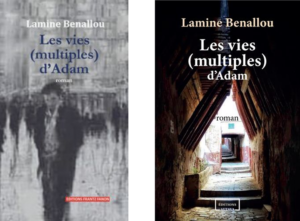– Novel –

|
Summary Adam’s (multiple) lives by Algerian writer Lamine Benallou revolves around Adam, who experiences a forty-day period marked by the disappearance of his wife, Amina. Instead of being buried, Amina’s body is kept in a family refrigerator, and Adam observes daily rituals in her ho-nor. The novel explores the symbolism of this forty-day period, which holds particular significance in Islamic religious culture. Les vies (multiples) d’Adam stands as a major work of Algerian literature. « This novel both questions and invigorates. In this extravagant context, enriched constantly with cultural references from Marc Aurelius’ ‘Meditations’ to Ibn Khaldoun’s ‘Muqaddimah,’ and Alejo Carpentier’s ‘The Century of Lights,’ not to mention Gabriel Garcia Marquez, the universal library of Babel symbolizing infinite knowledge and a challenge to human imagination is not just a mere wallpaper illusion! » – Rabeh Sebaa |
|
|
Information Publishers: Editions Frantz Fanon (Algeria, 2022), Altava publishing (France, 2023) Rights inquiries: here |
Biography
|
Lamine Benallou is a writer and a teacher of Spanish linguistics and literature at several universities, including in Spain and Algeria. He is the Director of the Cultural Department of the Foundation « el legado andalusí » in Granada, Spain, and the promoter of a Forum for reflection, « Spaces for Dialogue and Interculturality. Towards an Alliance of Civilizations. » He is the author of several books, including Les porteurs de parole (1998), L’Oranie espagnole. Approche sociale et linguistique (2002), Al Andalus, voyages dans la mémoire. Sur les traces de la civilisation hispanomusulmane (2010), and Para un Islam de las luces. Volver al espíritu de Córdoba (2020) |

@ Lamine Benallou |
